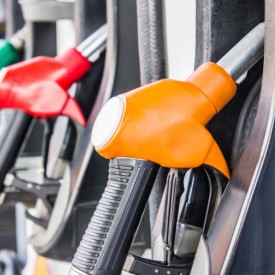AAA: Is the Recent Climb in the Price of Gas About to Stall?

Lackluster domestic demand for gasoline paired with decreasing oil prices led to the national average for a gallon of gas climbing just four cents to $3.67 since last week. With tensions running high over the past three weeks in the Middle East, the cost of oil reached the upper $80s per barrel. However, it has since fallen several dollars into the low $80s as the oil market watches to see if any further military actions occur.
“The situation overseas with war in both the Middle East and Ukraine has the oil market on edge,” said Andrew Gross, AAA spokesperson. “But this is also the time of year we may see a bit of a lull in gasoline demand between the end of spring breaks and ahead of Memorial Day. So the national average for gas may waffle a bit with small increases, some flat days, and even some price dips.”
According to new data from the Energy Information Administration (EIA), gas demand rose slightly from 8.61 to 8.66 million b/d last week. Meanwhile, total domestic gasoline stocks decreased by 1.1 million bbl to 227.4 million bbl. Higher demand and a rise in oil prices could push pump prices higher.
Thursday’s national average of $3.67 is 21 cents more than a month ago and the same as a year ago.
Quick Stats
The nation’s top 10 least expensive markets: Mississippi ($3.11), Colorado ($3.16), Louisiana ($3.18), Oklahoma ($3.22), Arkansas ($3.23), New Mexico ($3.26), Tennesee ($3.26), Kansas ($3.26), Alabama ($3.27), and South Carolina ($3.27).
The nation’s top 10 most expensive markets: California ($5.45), Hawaii ($4.78), Washington ($4.67), Nevada ($4.63), Oregon ($4.44), Alaska ($4.37), Arizona ($3.13), Utah ($3.96), Illinois ($3.96), and Idaho, ($3.93).
Oil Market Dynamics
At the close of Wednesday, April 17’s formal trading session, WTI decreased by $2.67 to settle at $82.86. Oil prices dipped as the EIA reported crude oil inventories increased by 2.7 million barrels from the previous week. At 460.0 million barrels, U.S. crude oil inventories are just 1% below the five-year average for this time of year.



